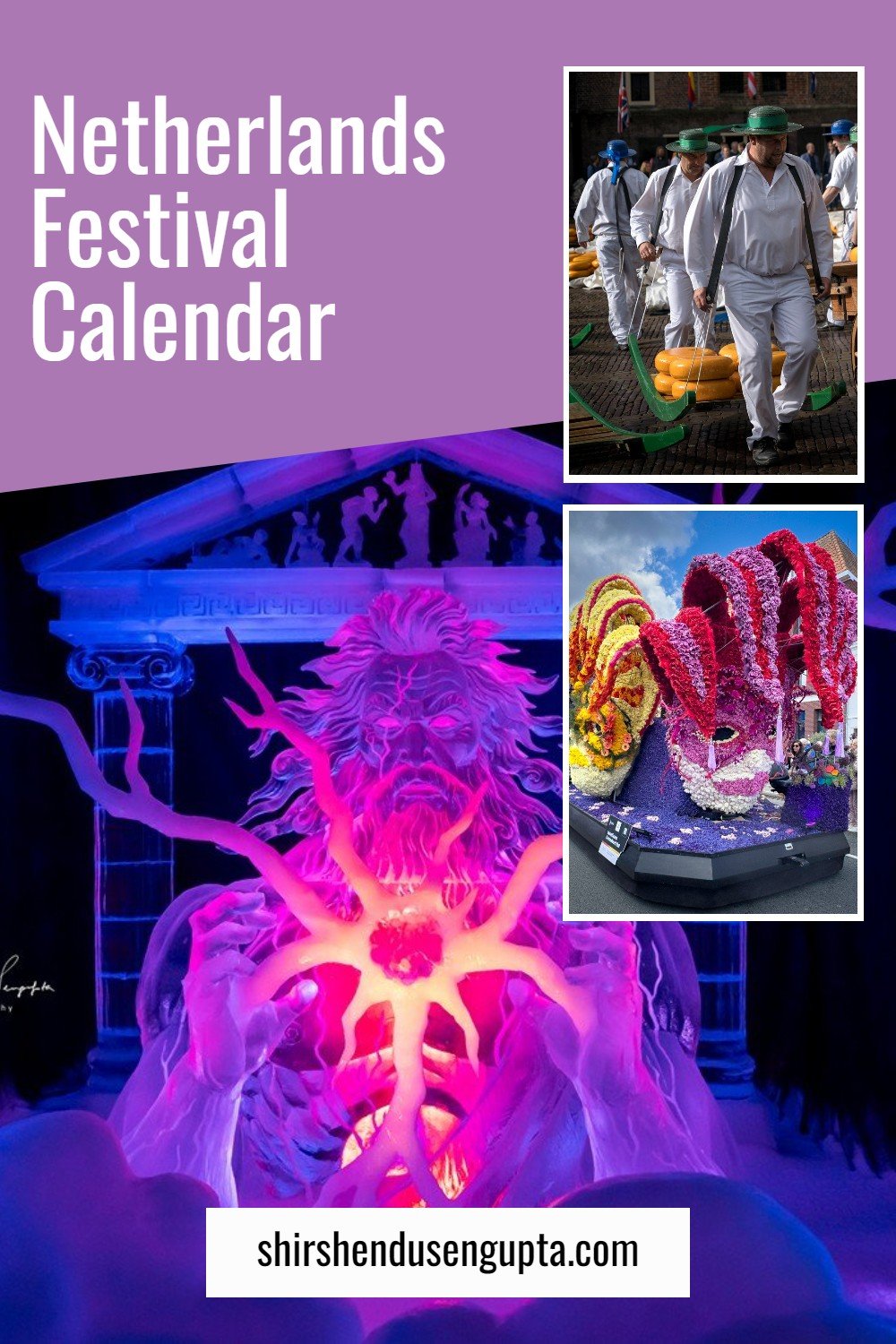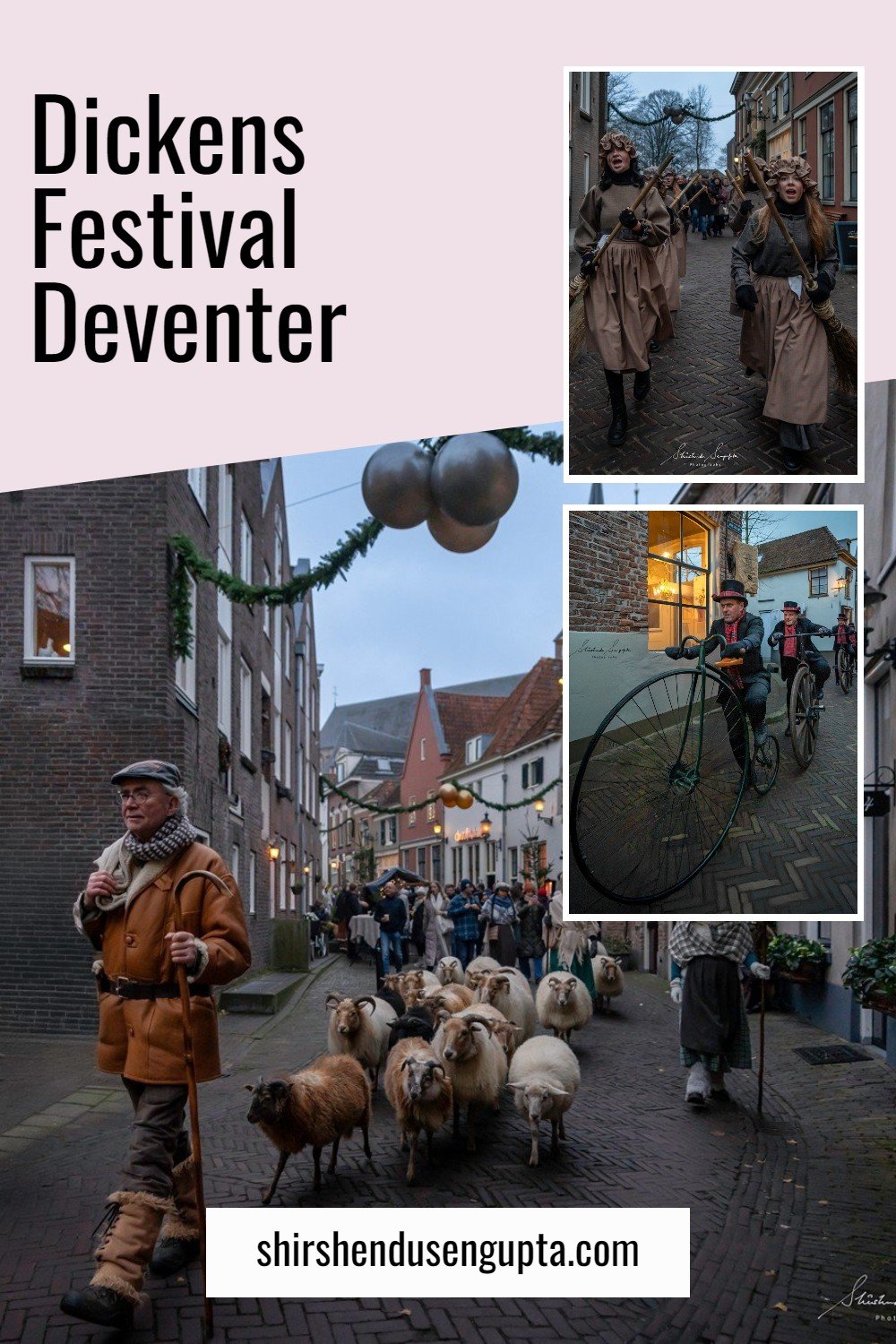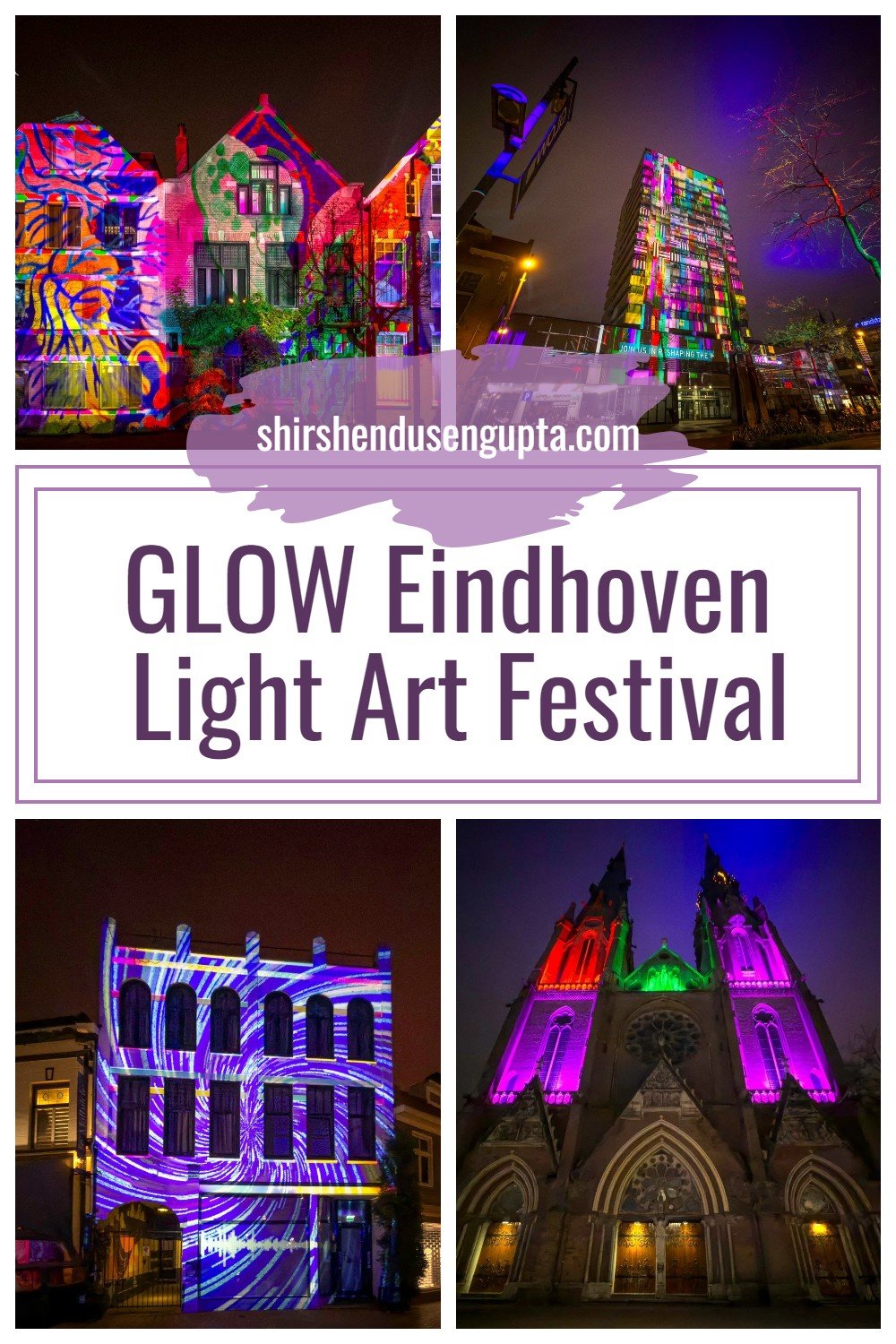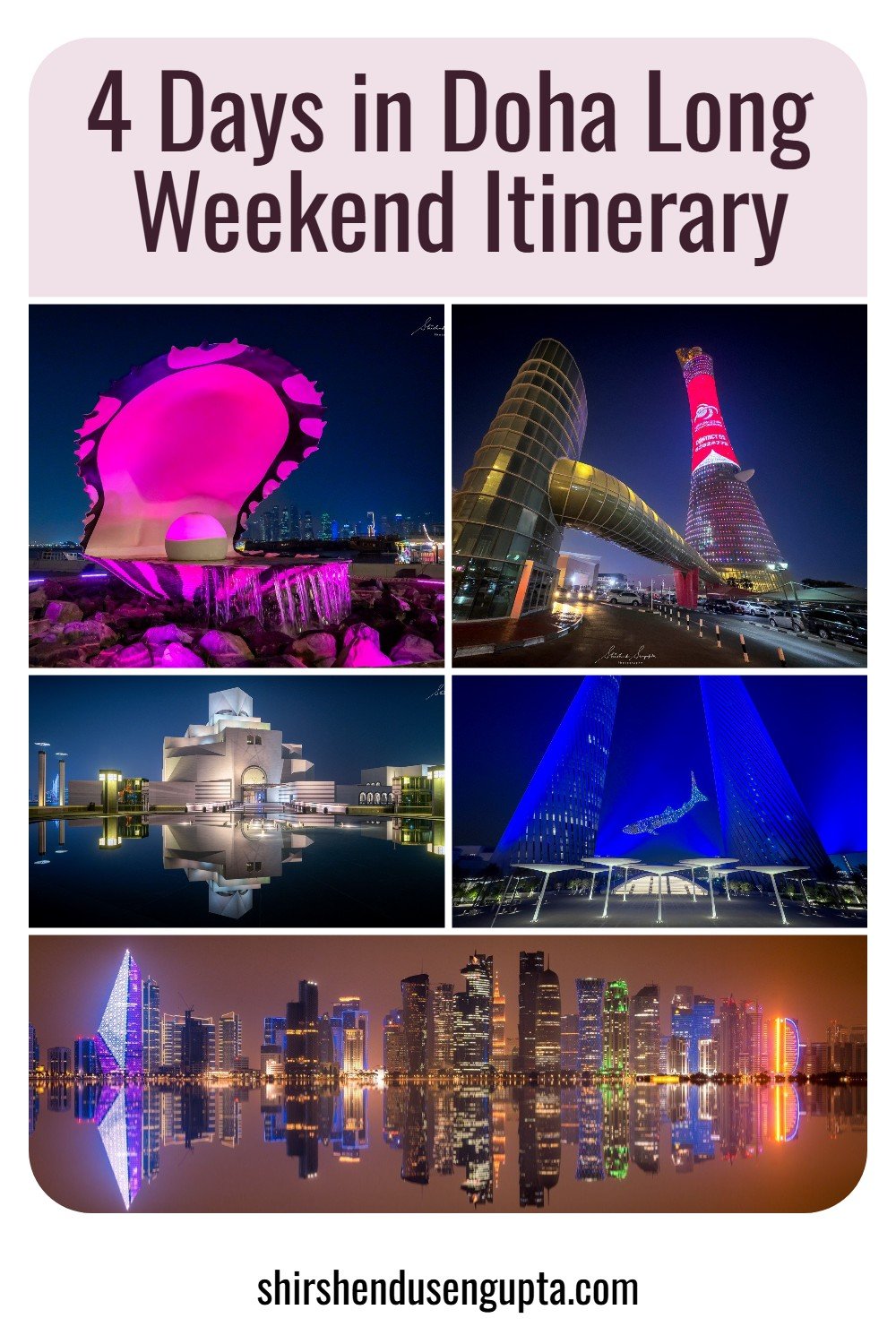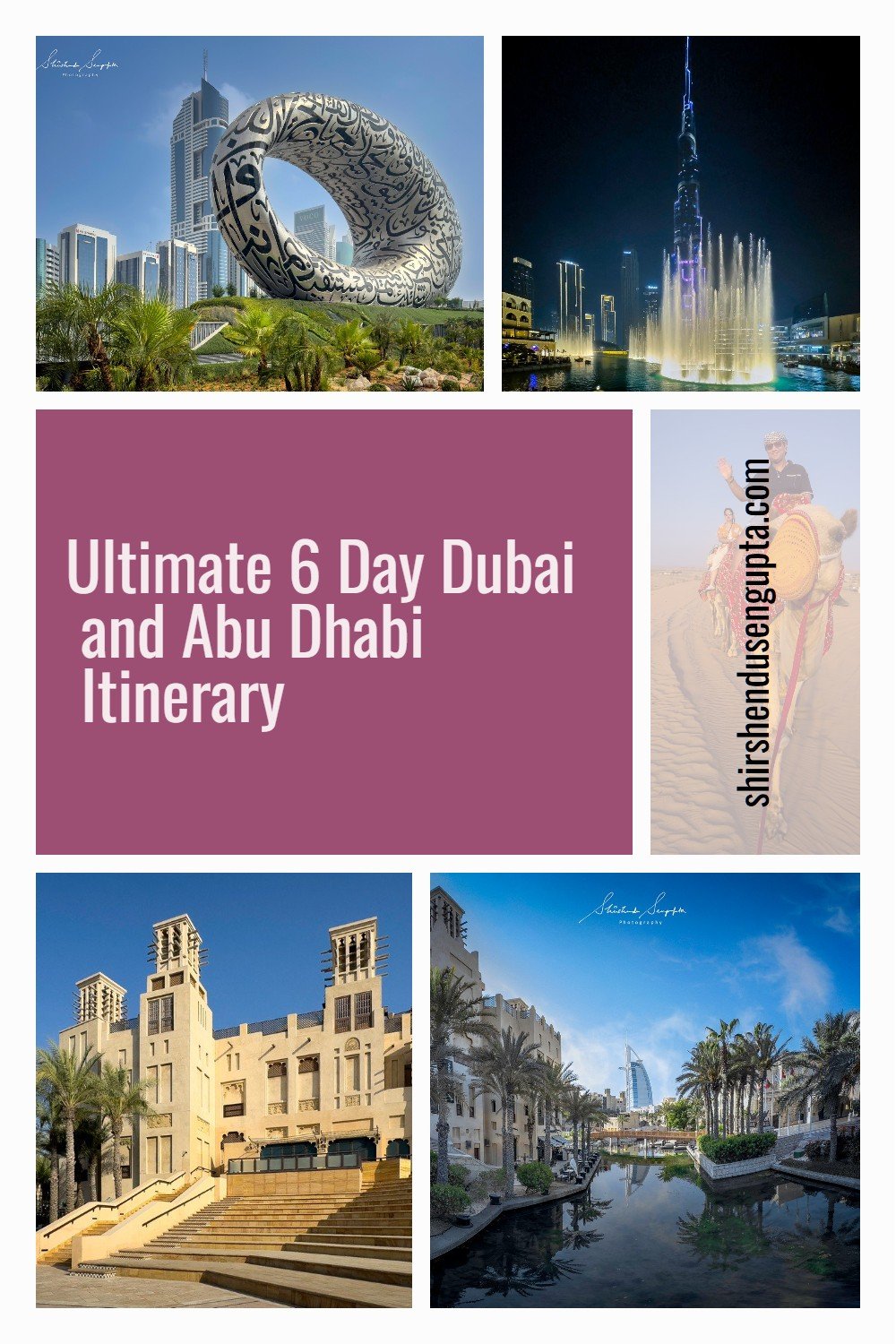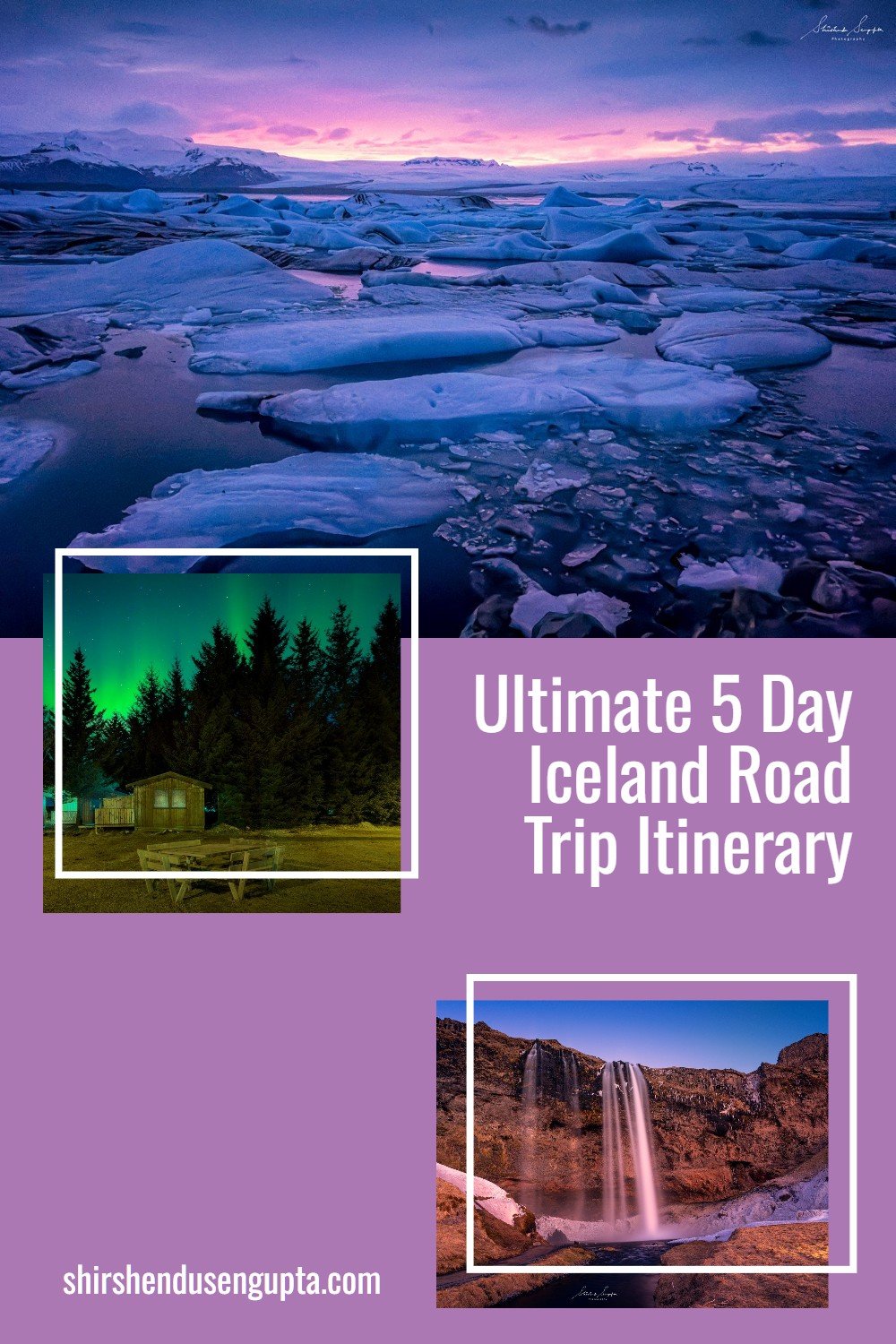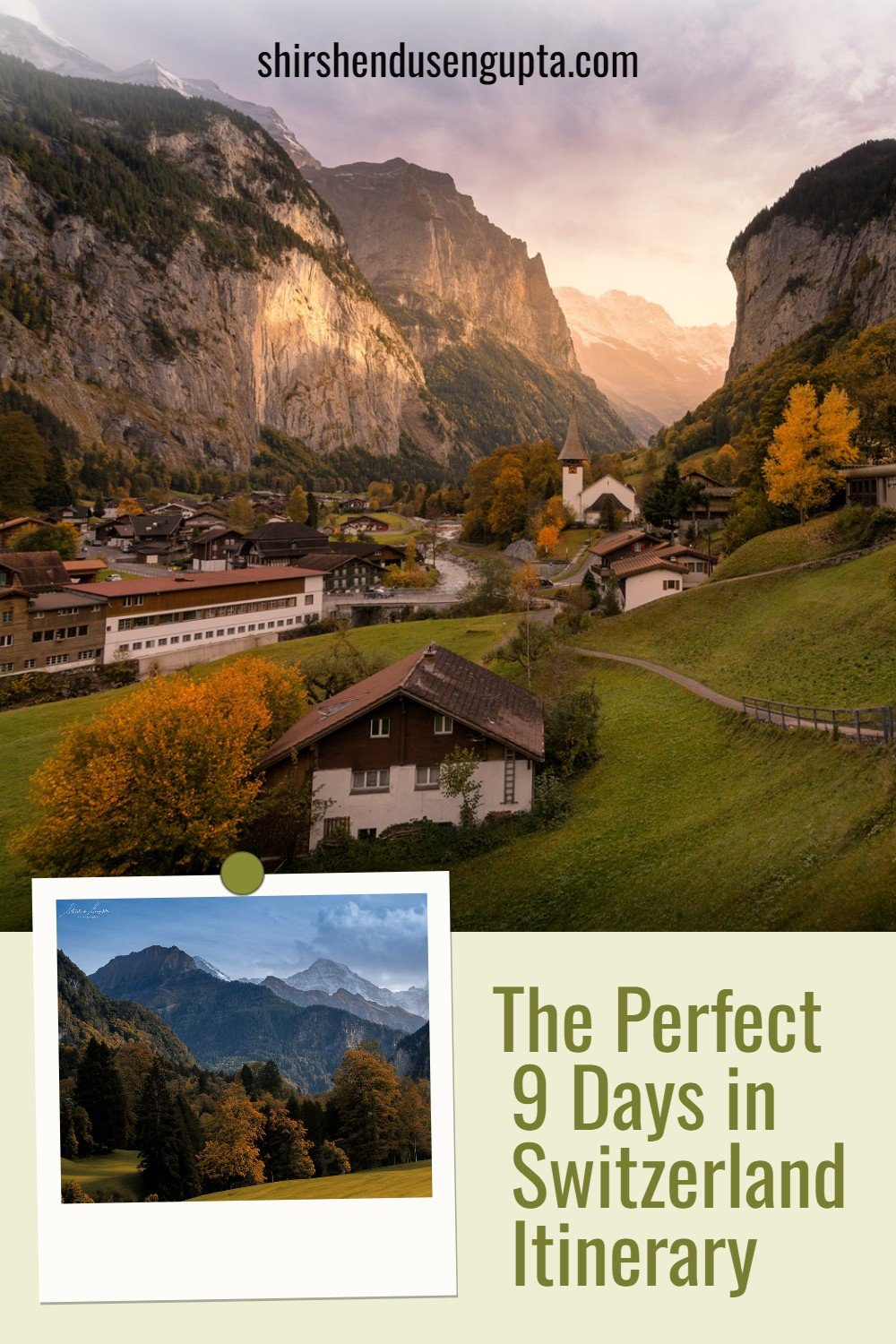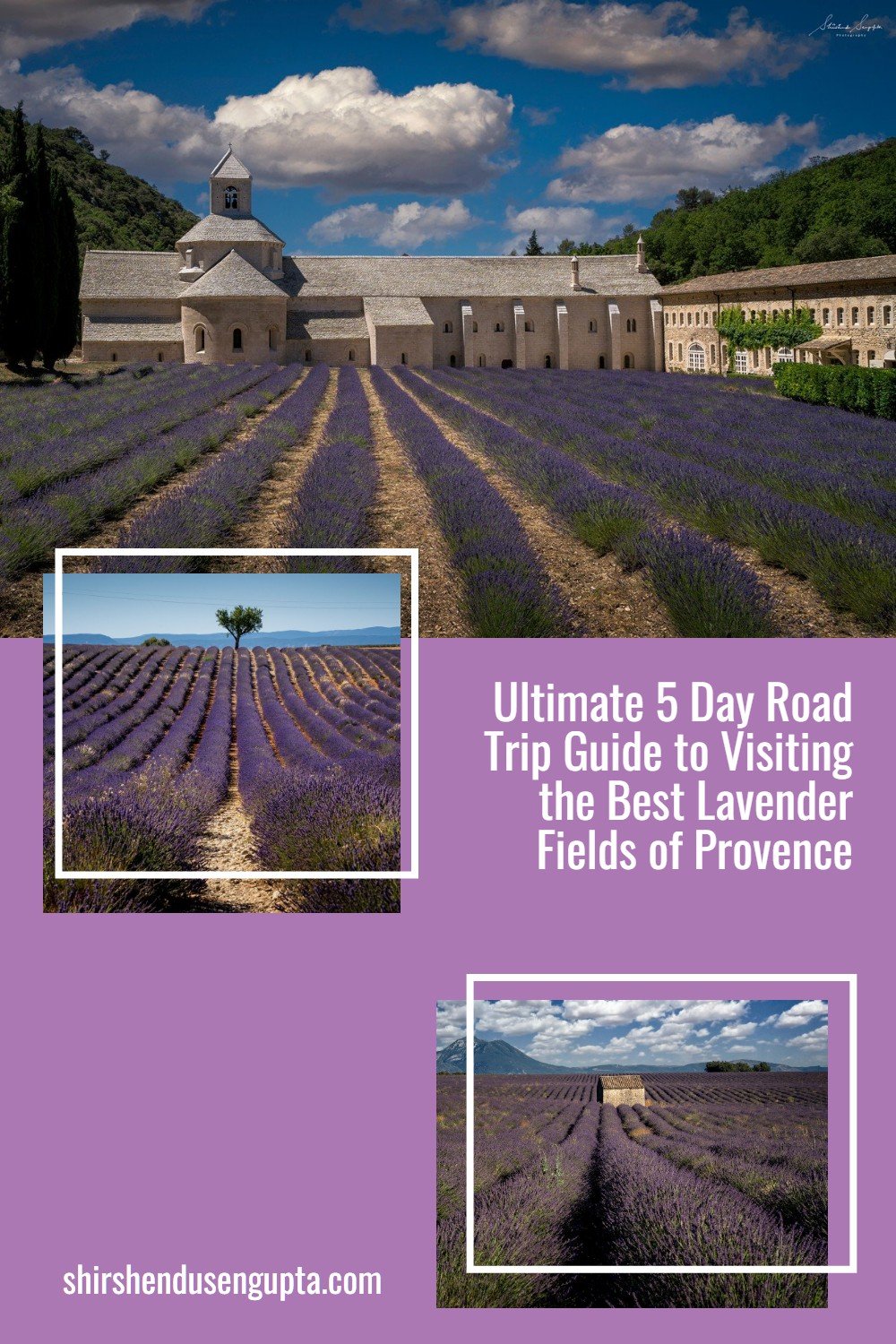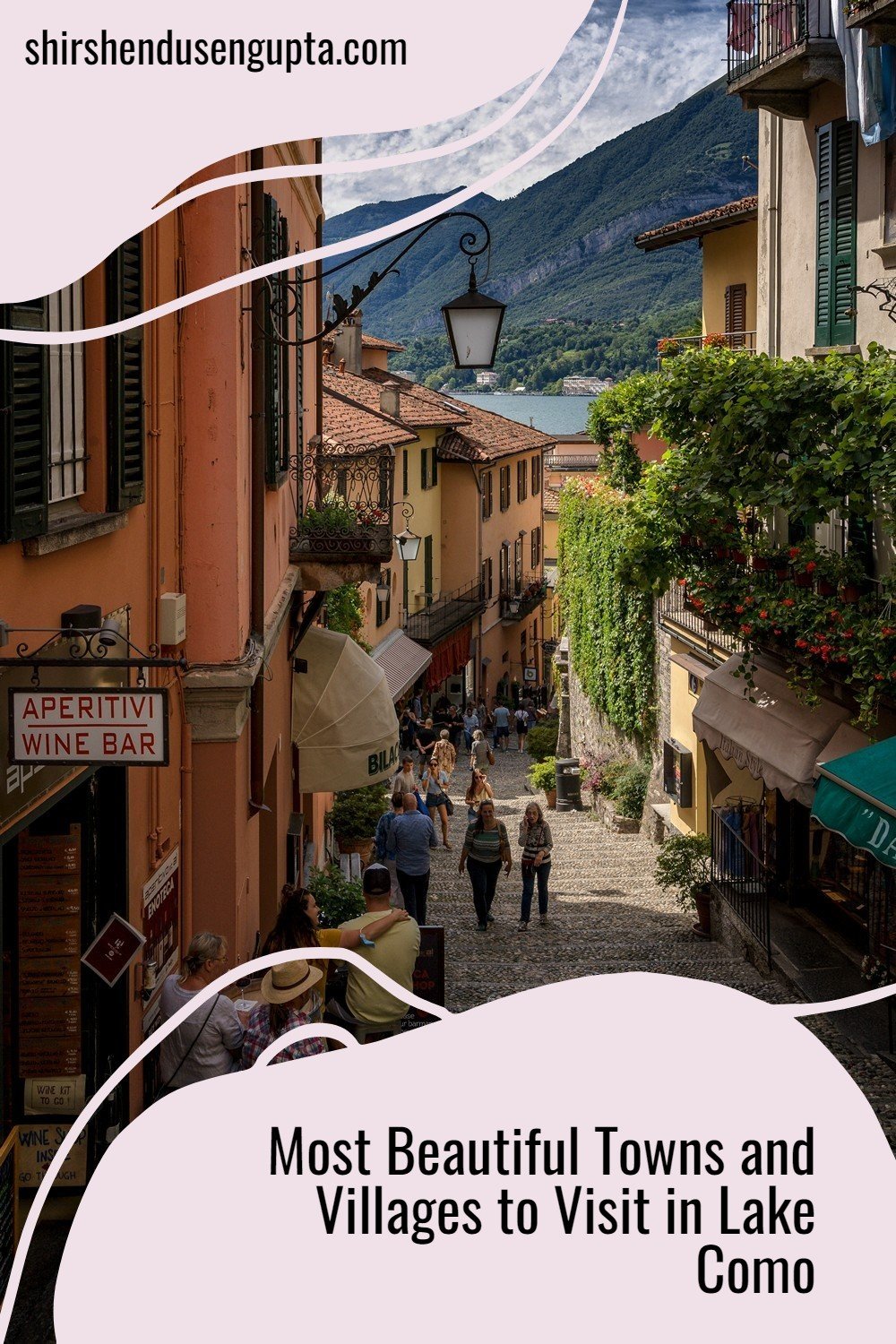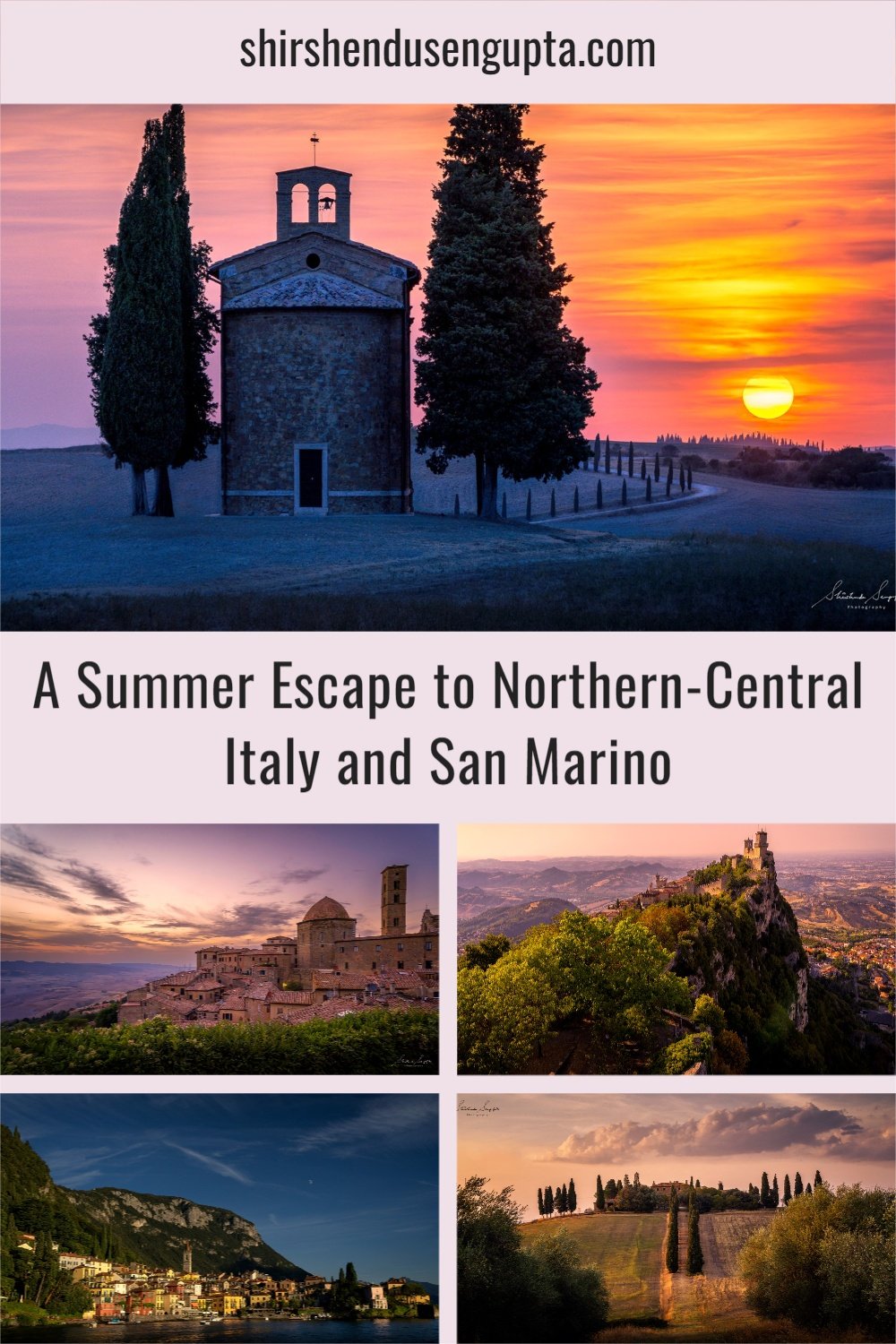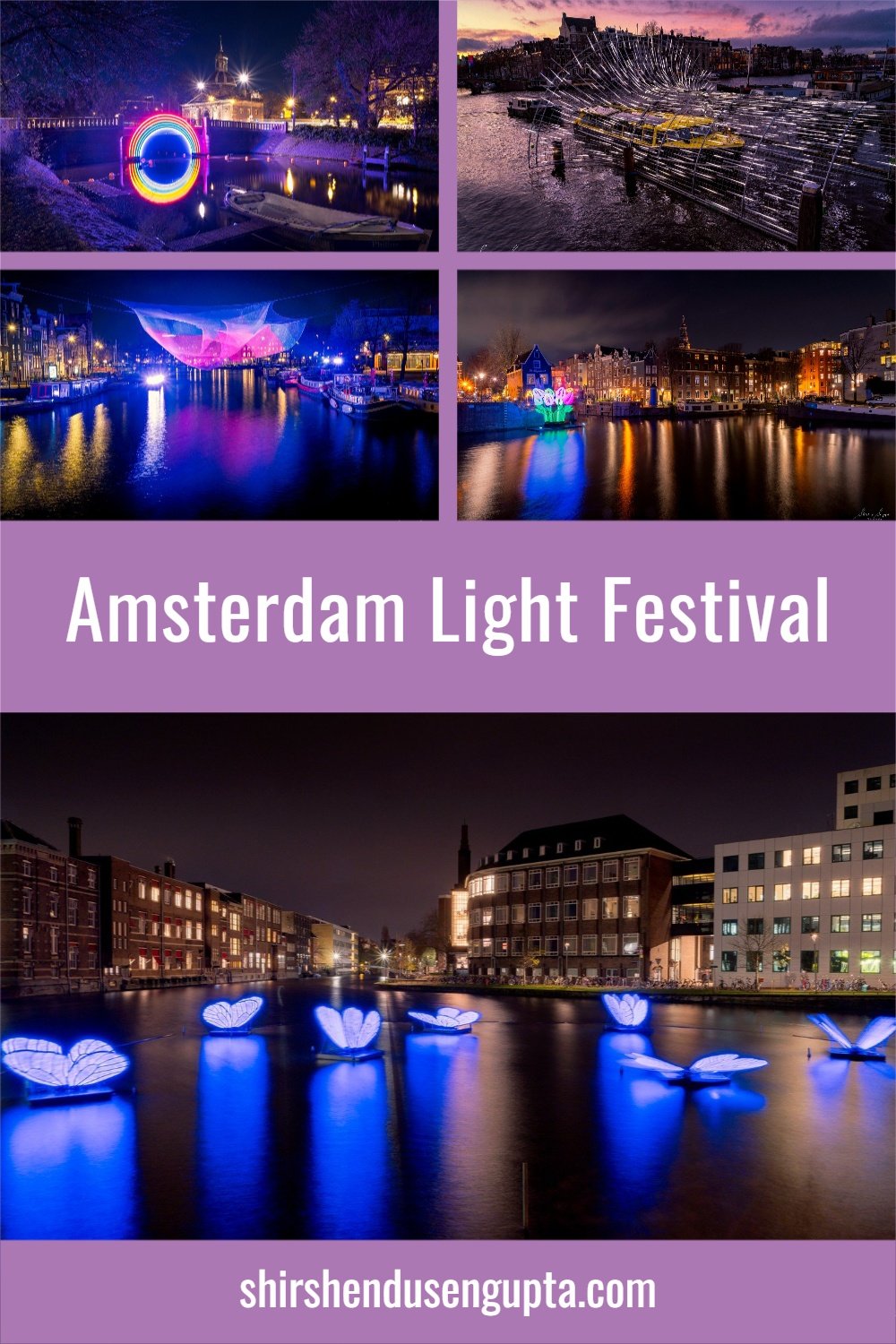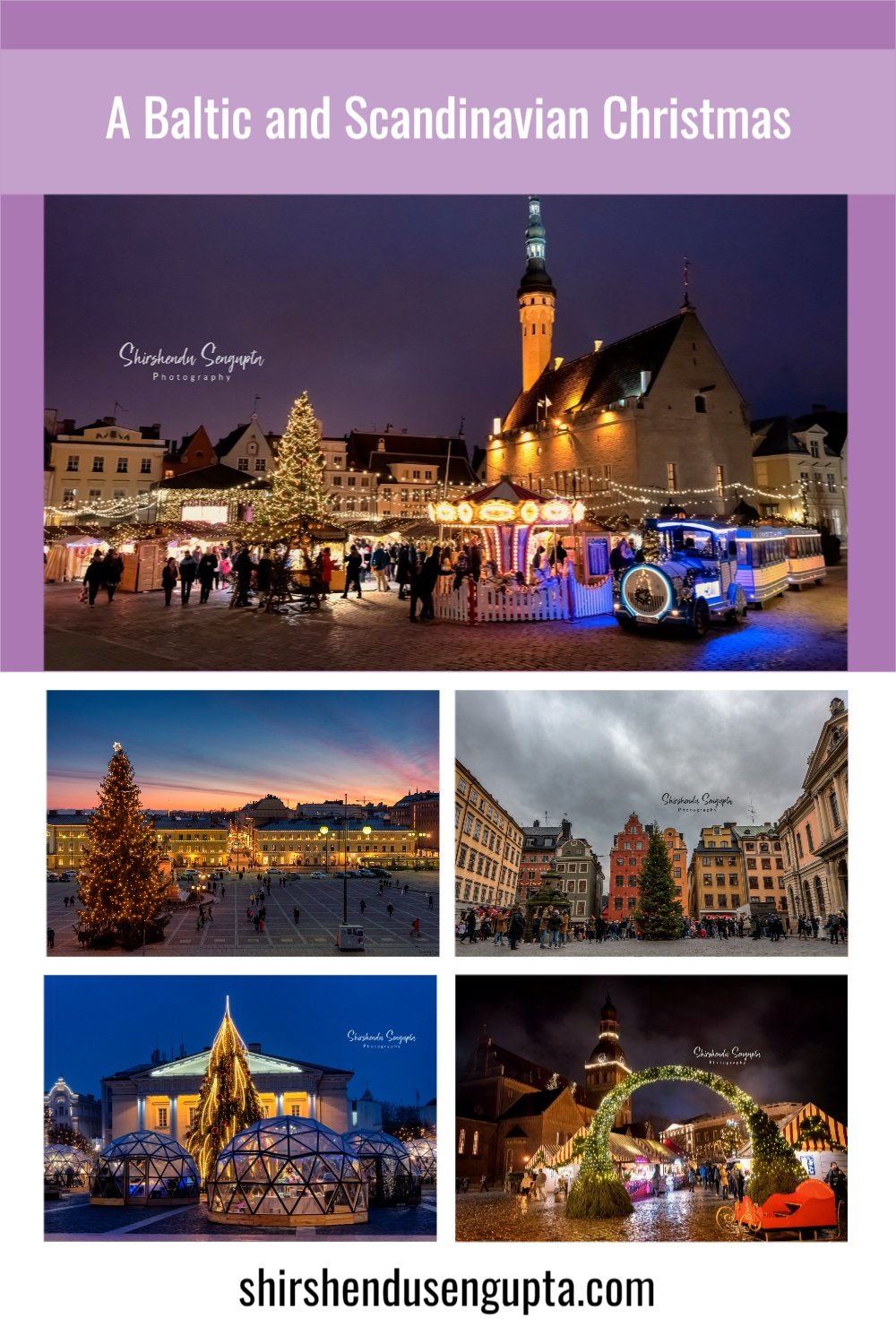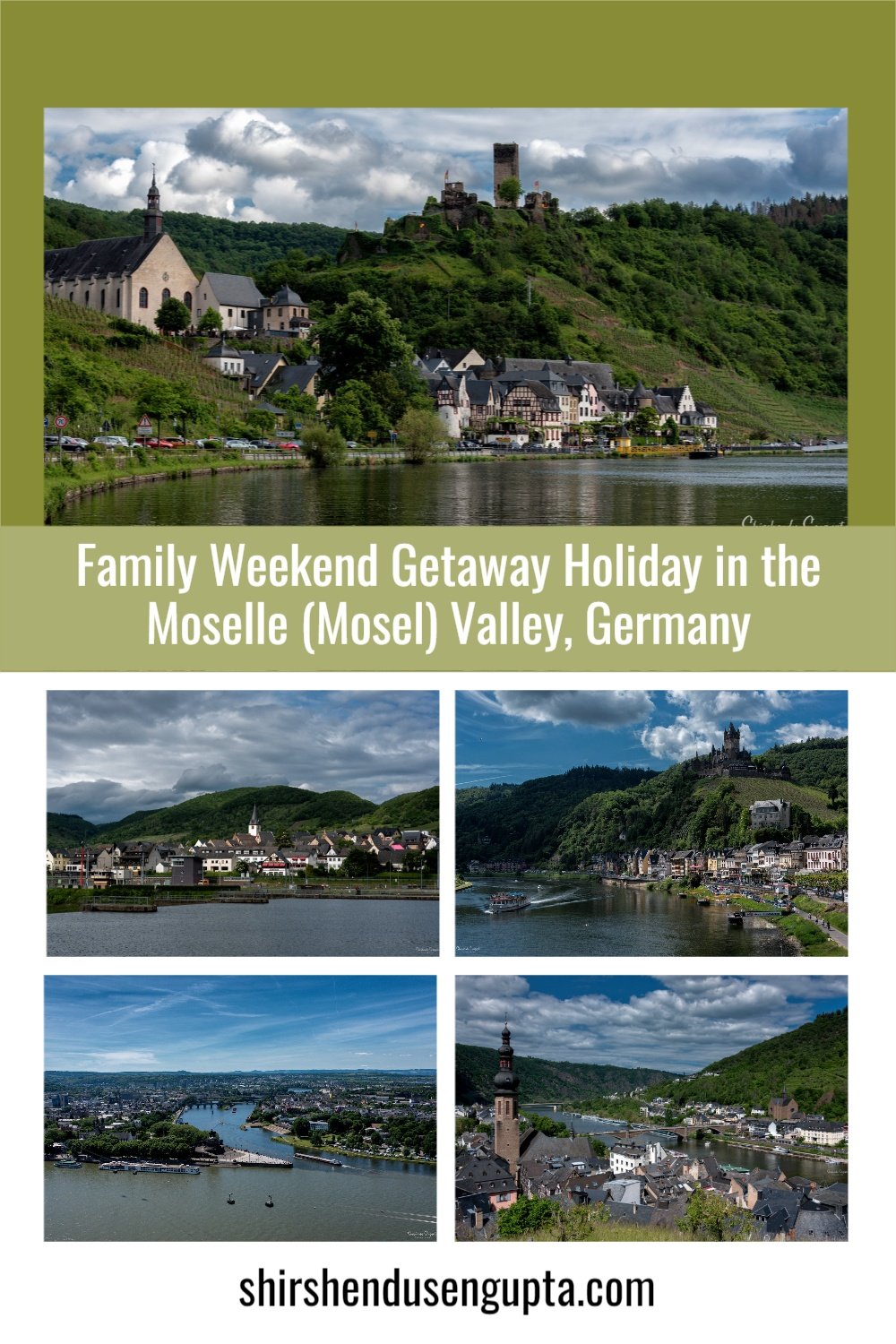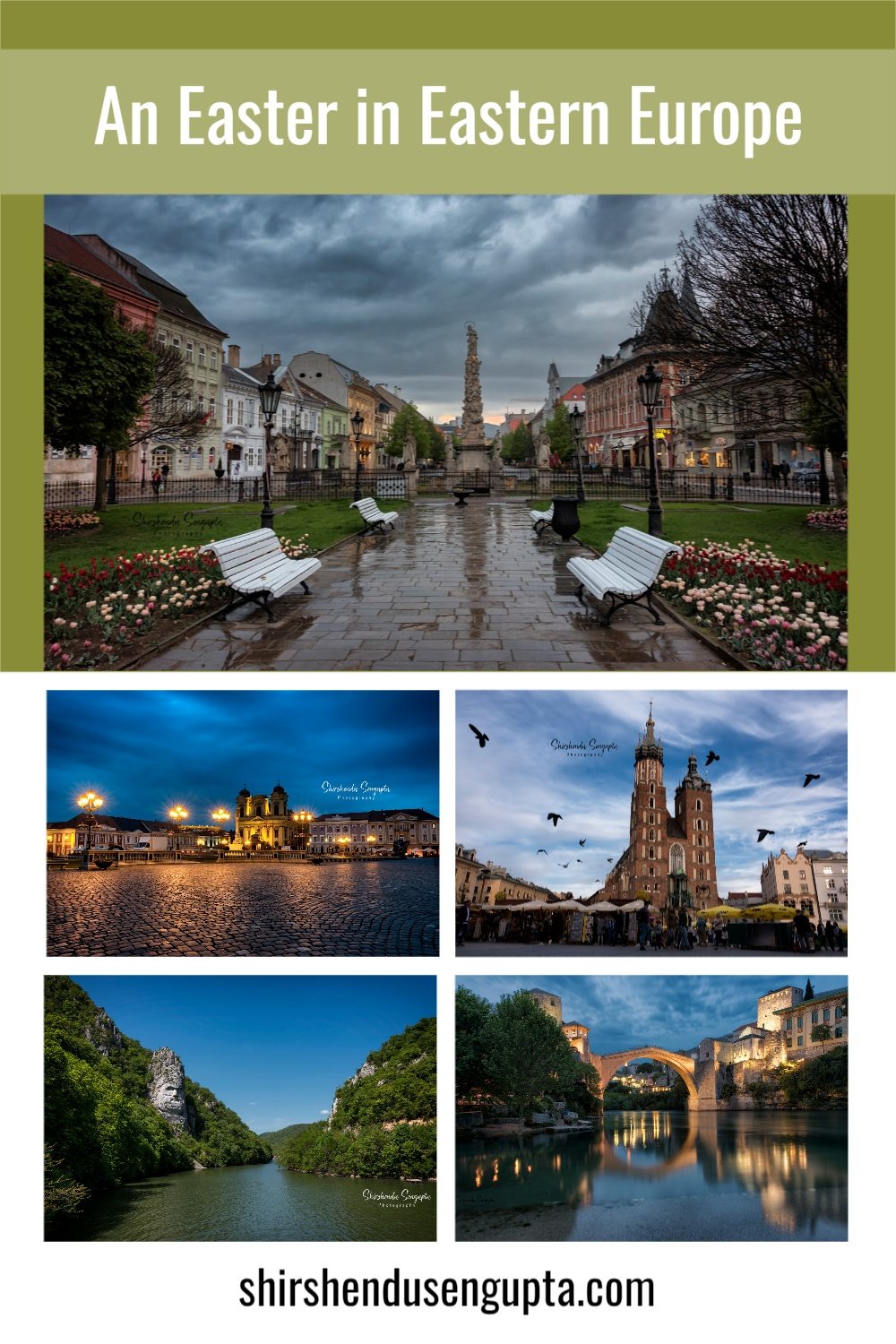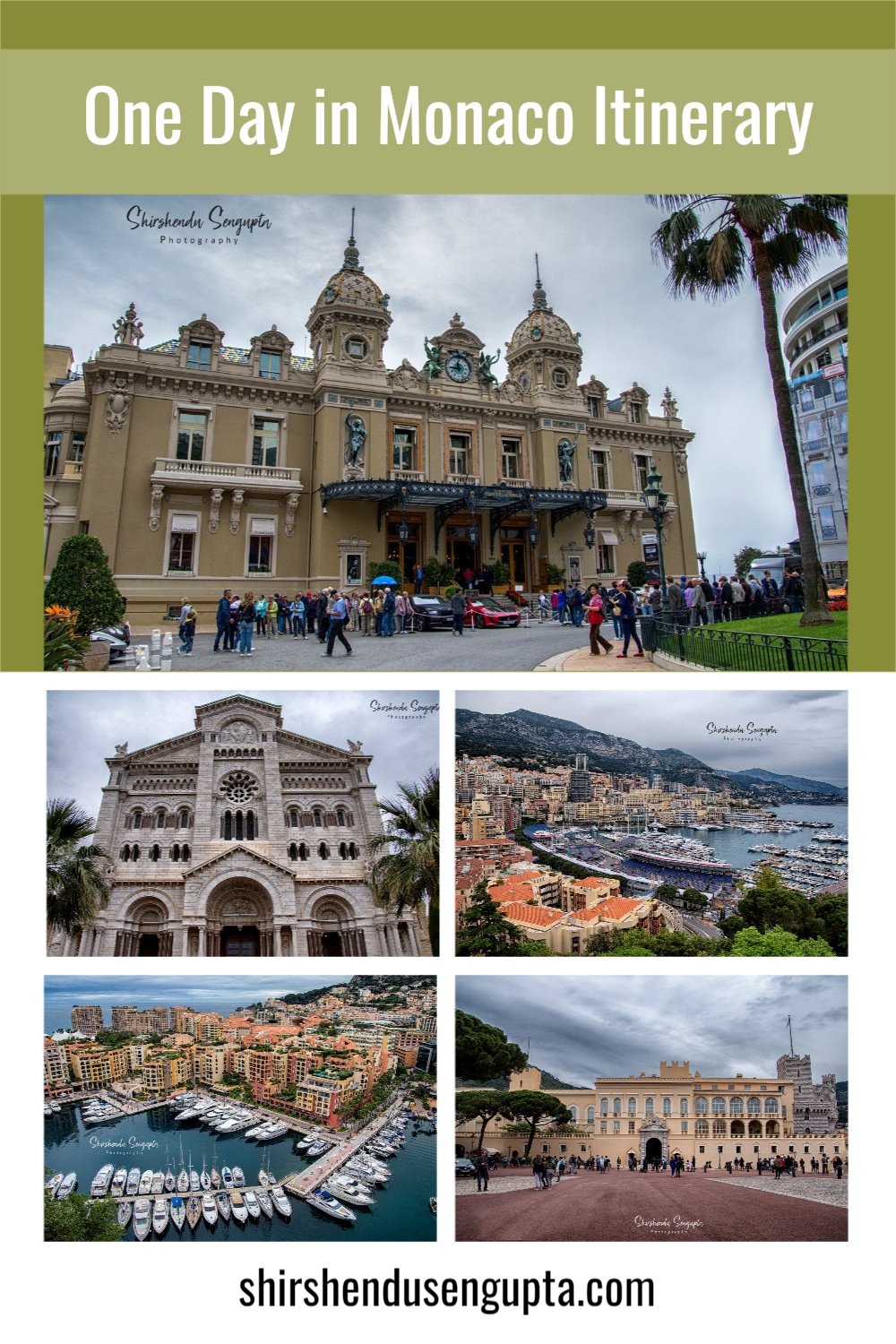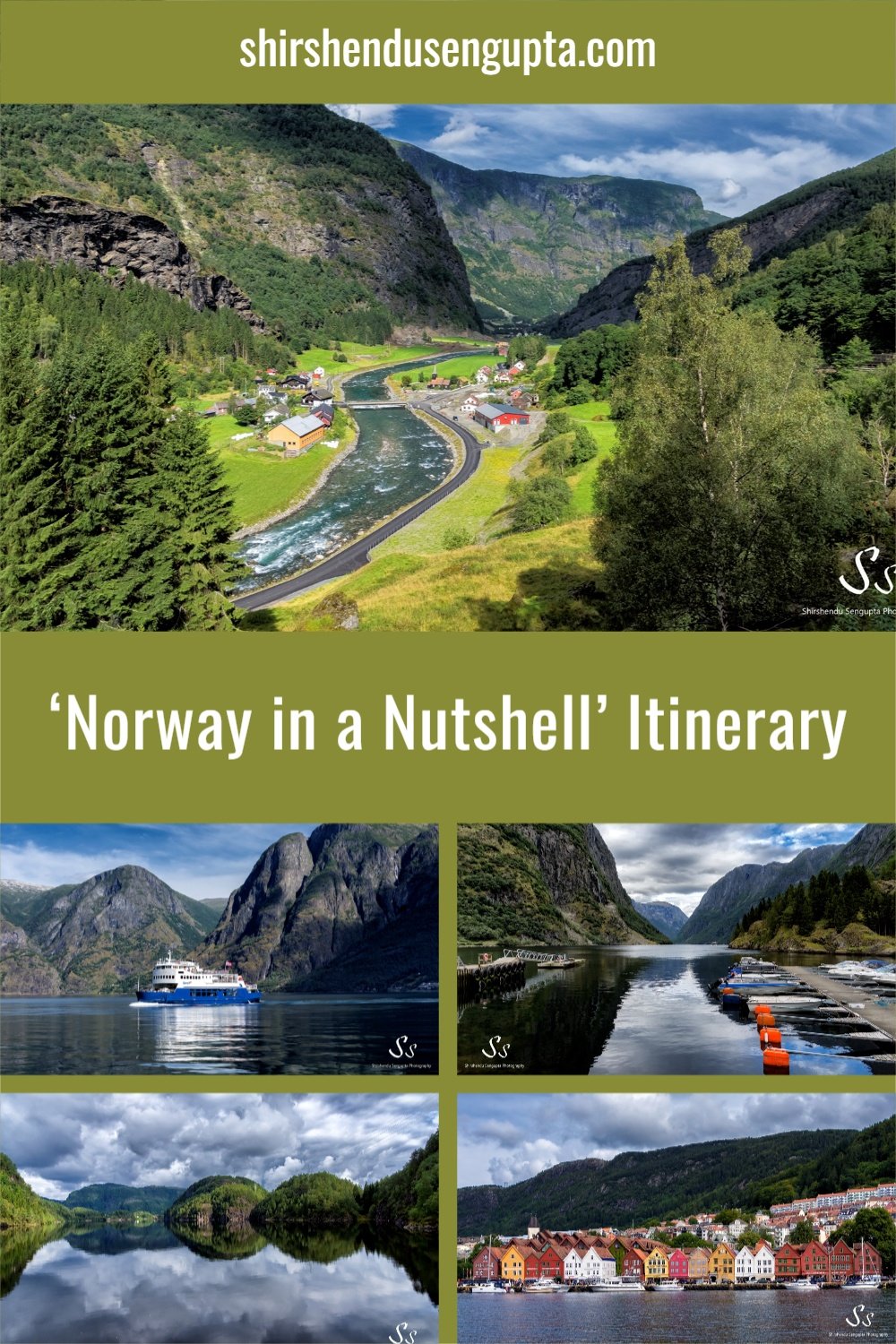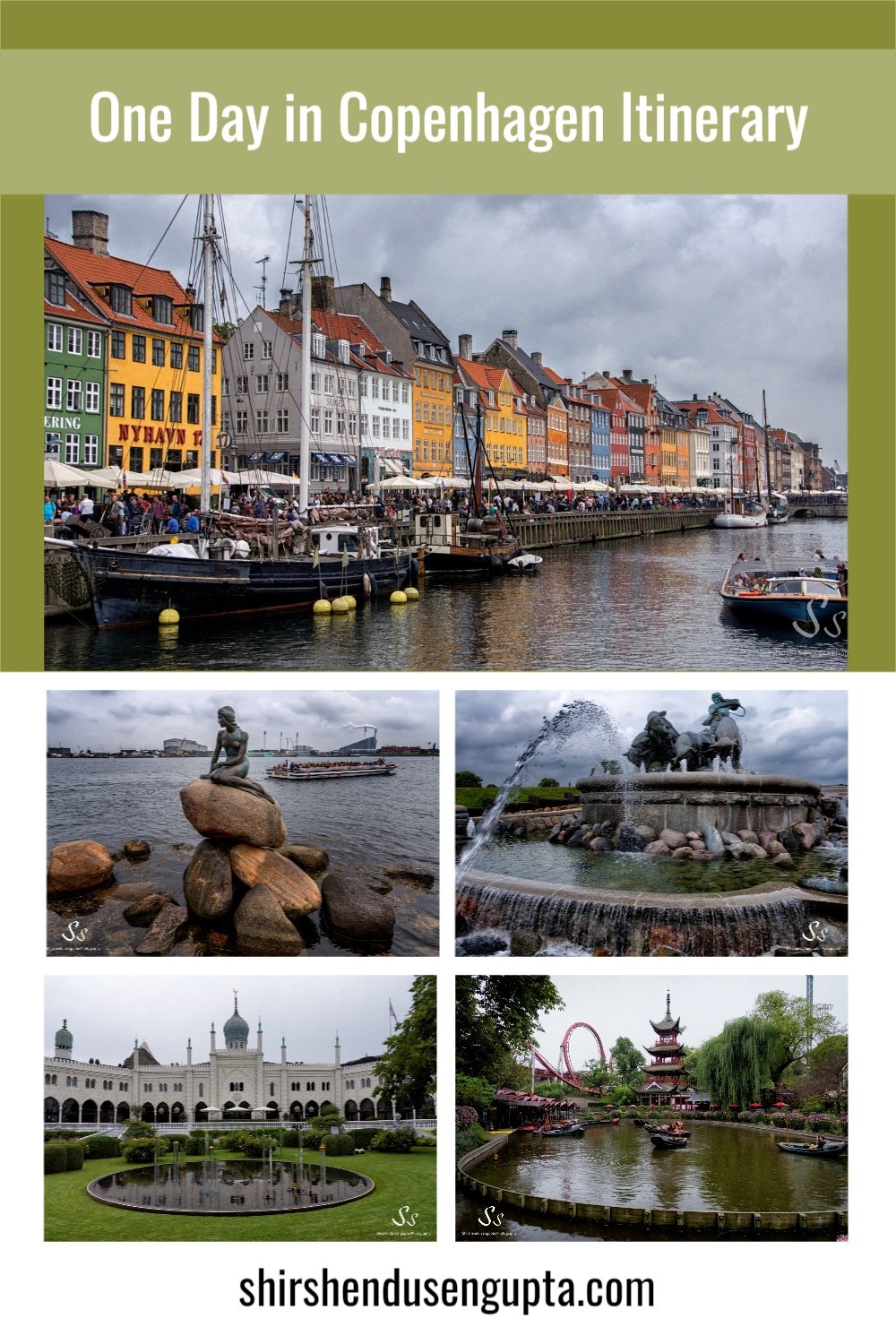The British Isles in 2 Weeks | 4000 km Road Trip across Great Britain (England, Scotland, Wales) and Ireland (Republic of Ireland, Northern Ireland) from the Netherlands | Itinerary, Tips, and Tricks
Prologue
Today, I’m going to tell you an epic story - a tale of roads and waters, of windswept cliffs and timeless isles. It’s the story of a cruise and road trip that began in the heart of the Netherlands and carried us across all five countries of the British Isles during the magic of Christmas. The British Isles consist of the following two main islands, each steeped in centuries of intertwined history and timeless charm -
Great Britain - It comprises 3 countries, namely England, Wales, and Scotland, which are all part of the UK (United Kingdom)
Ireland - It comprises 2 countries, namely Northern Ireland, which is a part of the United Kingdom, and the Republic of Ireland, which is still a part of the EU (European Union) post-Brexit
This journey wasn’t just about the miles we covered. It was about stories etched into stone castles, laughter echoing through cozy village pubs, and the quiet awe of standing before landscapes that have witnessed centuries. From the rugged cliffs of the Atlantic coast and the cobbled streets of medieval cities to tranquil countryside drives and lively Christmas markets, every destination had a rhythm of its own, blending culture, heritage, and natural beauty in perfect harmony.
So come along, let’s chase the winter light and wander together through one of the most enchanting journeys across the British Isles!
The Itinerary
Day 1: Sailing from Hoek van Holland (the Netherlands) to Harwich (England) and driving to London (England)
On the early morning of day 1, we left our home in Hoofddorp (the Netherlands) at around 11 AM to reach the port of Hoek van Holland (Hook of Holland) in an hour. Upon reaching, we queued up for about an hour with our car followed by visa/security check. We actually did not need any visa to visit the UK since we’re Dutch citizens, so it went pretty quickly for us. After that, we boarded the Stena Line Ferry, which is the largest combined freight and passenger ferry in the world. The ferry left the Netherlands at 14:15 CET (Central European Time) and reached Harwich (England) at 20:45 CET, i.e. 19:45 GMT (Greenwich Mean Time or England Local Time), since GMT is one hour behind CET, making a 200 km crossing over the North Sea in 6.5 hours. Just for your information, the North Sea separates England from the Netherlands and the English Channel separates England from France.
Since I had driven on the left side of the road earlier in former British colonies in Europe, like Malta, driving itself was not a problem. The problem was that all speed limit signs on the road were suddenly in mph (since the UK uses the imperial/FPS system), and my GPS started giving me voice instructions like “In 200 yards or 600 feet take a right turn.” Living in the EU, I’m used to estimating distances in meters and speed in kph. So, I had to convert yards/feet to meters in my mind to ensure that I took the correct turns and mph to kph to ensure that I kept my car below the speed limit. More on it in the ‘Info, Tips, and Tricks’ section below.
After a while, I got used to it and drove 80 miles (130 km) northwards from Harwich to the Hilton hotel in London where we stayed, in roughly 2 hours, across narrow English country roads amidst pitch darkness as the sun set around 16:00 CET. On the way, we stopped for dinner at a nearby Indian restaurant.
Day 2: Exploring London (England)
All of our hotels on this trip had a complimentary English breakfast buffet. So, we started our next day with a grand breakfast. After that, the plan was to walk to a nearby underground (tube) station, buy Oyster Cards (electronic smartcards used to pay for public transport in London) for all 3 of us, top them up with credit, and then use them for accessing public transport to explore central London. But since it was cold and windy, we felt lazy and finally decided to drive to the center of London. The downside was, as you can expect, busy roads and exorbitantly priced parking garages. More on it in the ‘Info, Tips, and Tricks’ section below.
We began with visiting Buckingham Palace, followed by taking the Queen’s Walk (promenade by the river Thames) covering Millennium Bridge (and St. Paul’s Cathedral), Tower Bridge, and the Shard (at 306m high with 72 storeys, it is the tallest building in Western Europe), shopping in Harrods (iconic luxury department store), exploring the Westminster Abbey, and ending the day by taking long exposure shots of the Houses of British Parliament along with the Big Ben Clock Tower and the London Eye (Giant Wheel). After that, we had dinner, drove back to our hotel, and slept off.
To know more about the best things to do in London, including day trips from London, please read our article 14 Best Things to Do in London including Day Trips from London | Top 14 Places to Visit and Must See Attractions in and around London, England, United Kingdom.
Day 3: Day trip to Stonehenge from London (England) and exploring the rest of London (England) upon return
On the next mind-bogglingly windy day, we went on a day trip to the UNESCO World Heritage site of Stonehenge in the Salisbury Plain in Wiltshire, England, 115 miles (or 185 km) west of London. On the way, we had an outstanding lunch in an Indian restaurant named ‘Tandoori Nights’ in the city of Amesbury, just 15 minutes away from Stonehenge. To reach Stonehenge, you need to park in the public parking near the Visitor Center, buy tickets, visit the exhibition at the Visitor Center that tells the Stonehenge story, and then either take a half-hour walk or a 10-minute bus ride to Stonehenge. The tickets are a bit too pricey in my opinion, owing to which the ‘English Heritage,’ the organization that manages Stonehenge along with 400 other historic sites in England, earns around 6 million pounds annually only from Stonehenge.
Stonehenge, one of the world’s most mysterious prehistoric sites, has stood on Salisbury Plain for over 4,500 years. This UNESCO World Heritage Site consists of a ring of massive standing stones, some weighing up to 25 tons, arranged in an astronomical alignment. Archaeologists believe it was built in multiple phases between 3000 BC and 1500 BC, but its exact purpose remains debated. Some theories suggest Stonehenge was an ancient observatory aligned with the solstices, while others propose it was a religious site, a burial ground, or a place of healing. The construction of Stonehenge is equally enigmatic — without modern machinery, early builders transported the massive bluestones from Wales, over 150 miles (240 km) away, demonstrating an advanced understanding of engineering.
Today, visitors can explore the site via a designated path, immersing themselves in the monument’s mystical aura. The Stonehenge Visitor Centre provides fascinating insights into its history through interactive exhibits and reconstructed Neolithic houses. Every year, during the summer and winter solstices, crowds gather to witness the sunrise and sunset, just as ancient civilizations may have done millennia ago. A day trip to Stonehenge from London offers a glimpse into Britain’s prehistoric past and its enduring mysteries. To know more about Stonehenge and how to visit it, please read our article Visiting Stonehenge | A Complete Guide to England’s Most Mysterious Prehistoric Monument | History, Facts, Location, and Map.
At Stonehenge, we had a (now funny but not so funny at that time) incident. While we were struggling in the tremendous windy conditions to take a family selfie with Stonehenge using my 2-month-old iPhone Pro Max, a supposedly good samaritan tourist came forward and offered to take our pic. I wasn’t willing to give him the phone, but when he strongly insisted, saying “Don’t worry, I’m a professional when it comes to handling phones,” I hesitantly handed him the phone. And in the blink of an eye (even before taking the picture), he dropped it on the stony road encircling Stonehenge. He immediately picked it up and gave it back to me, saying “Everything is fine,” without showing any feeling of regret, and disappeared into thin air. I was flabbergasted at the speed with which it all happened and my heart came to my throat when I turned the phone to see the screen was completely shattered. But when I looked closely and realized that my ‘Panzer Glass’ screen protector (an award-winning Danish screen protection brand that’s among the most expensive in the market but provides the strongest protection according to me) and ‘Spigen’ rubber phone case (the best protective phone case brand for iPhone according to me) had completely protected it, I felt relieved. But it also meant I would have to take photos with a shattered phone on this trip as ‘Panzer Glass’ is unavailable in the local stores of the British Isles (the ones available at the local stores were cheaper but thinner and hence much less protective). But it was what it was!
After visiting Stonehenge, we came back to London and continued our London exploration. We started with visiting Trafalgar Square, followed by Piccadilly Circus (London’s equivalent of New York’s Times Square), and ended up at the Winter Wonderland Christmas Market in the iconic Hyde Park (one of the largest parks in the UK) which’s known to be the largest Christmas Market in the UK. But unfortunately upon reaching, we learnt that we needed tickets to enter the Winter Wonderland Christmas Market and that all tickets were sold out for the next 3 days. So, the only thing we could do was digest our sadness along with some butter naan and chicken tikka masala at a nearby restaurant and leave for our hotel!
To know more about the best things to do in London, including day trips from London, please read our article 14 Best Things to Do in London including Day Trips from London | Top 14 Places to Visit and Must See Attractions in and around London, England, United Kingdom.
Day 4: Driving from London (England) to Cardiff (Wales) visiting Bibury (England) on the way
The next day, we had to check out from our hotel in London. So, we got up early, had breakfast, came back to the room, and started getting ready for checking out. I was the first to freshen up. After getting ready, I got busy copying the images from my camera’s memory card to my laptop as well as another portable external hard disk (as a backup) while Jayeeta and Ricky were still freshening up. Suddenly, the fire alarm started ringing all over the hotel, and there was an urgent announcement that it was a real fire and not a mock fire drill. We were asked to vacate the rooms and gather in the lobby on the ground floor immediately. Jayeeta and Ricky rushed out of the room half-showered and only then realized that I was still in the room calmly completing the ongoing image copying to my laptop and external hard disk, which was a couple of minutes away from completion and would be jeopardized if I interrupted it. When they asked me why was I taking the alarm so lightly, I told them that, firstly, I had a gut feeling that it was a false alarm. Secondly, I knew from the experience of mock fire drills, that once everyone was in the lobby, it would take half a day for all to get back to their rooms using the queued-up elevators after the fire was extinguished, which would delay our checkout and hence massively impact our planning for the rest of the day. So, why not wait for a couple of minutes to finish the copying and then leave with all our luggage, which was already packed and ready for checkout?
Finally, when we rushed out of our room with all our luggage, oh my goodness, there was horrific chaos all across our corridor! People were panicking and hurrying down the stairs, hotel staff were rushing up and down all floors trying to locate the source of the fire, some people were speculating that the fire could be from a locked room on our floor itself, and Jayeeta even started smelling smoke while we passed that room. Anyway, we took the elevator to the ground floor, which is by the way, never recommended during a fire, but for us, it was the only option with so much luggage. Upon reaching the ground floor, we waited for around 15 minutes for the staff to discover the source of the fire. And then we came to know what I had already expected - it was a false alarm! Apparently, the staff did not find any fire in the hotel, and on CCTV, they saw an unattended kid (of one of the guests, of course) breaking the glass of the fire alarm and ringing it. The general manager of the hotel, who was a Bulgarian lady, blasted all guests at length and reminded us of our parental responsibilities. While all this aftermath drama unfolded, we dropped our keys at the reception and drove away from the hotel. So, on a lighter note, this incident actually helped us do an early checkout and stay aligned with our plan. But on a serious note, thinking in hindsight, my decision to wait for the image copying to be finished and to use the elevator may not have been the best of choices had there been a real fire. So I recommend all of you not to follow my actions in this case. As you know, the age-old adage “Do as I say, not as I do!” By the way, I still don’t know how Jayeeta smelled smoke from that locked room which had no fire, but never mind!
After checking out from our hotel, we drove 100 miles (or 160 km) westwards in roughly 2.5 hours to Bibury, often considered one of the prettiest villages in England, located in the picturesque Cotswolds area in West England. With its charming stone cottages, winding lanes, and tranquil riverside setting, Bibury is the perfect place for a peaceful escape from the hustle and bustle of London. You can stroll along Arlington Row, a row of beautiful 17th-century cottages lining the banks of the Coln River that have become one of the most photographed scenes in England. It even featured on the back of UK passports! It was transformed into a row of weavers' cottages in the 17th century after being constructed as a monastic wool store in the 14th century. The River Coln runs between the main village street and Rack Isle, a vast area of marshy water meadow so named because wool was previously placed there on racks to dry after being washed in Arlington Row. It creates one of the most gorgeous landscapes in the Cotswolds, especially with Arlington Row as the backdrop. The village’s beauty caught the attention of artist and designer William Morris, who called it "the most beautiful village in England." It has also been a filming location for movies like Stardust and Bridget Jones’s Diary. Other attractions in Bibury include Bibury Trout Farm (one of the oldest trout farms in England covering almost 15 acres, where you can learn about trout or even catch your own dinner) and the St. Mary’s Church with a Saxon graveyard, a Norman doorway, and some fine medieval windows. A visit to Bibury offers a glimpse into rural England, making it a perfect day trip for those seeking peace, history, and natural beauty.
To know more about the best things to do in Bibury on a day trip, please read our article 7 Best Things to Do in the Beautiful Cotswolds Village of Bibury | Top 7 Must See Attractions and Activities on a Day Trip to Bibury, England, United Kingdom.
After visiting Bibury, we drove another 85 miles (or roughly 140 km) westwards in roughly 2 hours to reach our hotel, the Holiday Inn on Cardiff Bay in the city of Cardiff, the capital of the country of Wales. The plan for the next day was to explore Cardiff, but the weather forecast wasn’t promising as we had a flood alert. So we kept our fingers crossed and slept off.
Day 5: Exploring Cardiff (Wales)
The next whole day, it rained cats and dogs along with tremendous wind as predicted by the flood alert. This was by far one of the worst weathers we had faced on our travels so far. So, unfortunately, we had to stay back in the hotel for most of the day. Despite the incessant rain and wind, we decided to explore the city post-lunch, which almost coincided with sunset time (around 15:45 GMT in Cardiff during December). Even then, I could not take a single shot on my camera since because of the strong winds the raindrops would wet my camera lens within a fraction of a second. I still tried my best to use my camera with and without the tripod, but it didn’t work. So I had to ditch my fully drenched camera and instead rely on the RAW photo capabilities of my iPhone Pro Max alone for this city. We covered Cardiff Castle, Cardiff Bay Viewpoint, Merchant Seafarers' War Memorial and Pierhead Building, Wales Millennium Center, Llandaff Cathedral, Cardiff City Hall, and Cardiff National Museum.
However, when we went back to the hotel, I found my camera viewfinder completely fogged by water droplets and the sensor having condensation spots as well. I was surprised since my camera and lens were weather-sealed, and like always, I had left my camera sitting inside the zipped bag for 4-5 hours before taking it out into the warm room after coming from the chilly weather outside to allow for gradual warming, thereby avoiding condensation. So, I thought it could either be that the weather protection did not work as expected or that before leaving it in the zipped bag for 4-5 hours, I did not wipe it dry properly. Anyway, I prayed to God that the viewfinder fog cleared up the next day and that the sensor spots didn’t impact my images and videos on the trip too much, and took a giant leap of faith on the comfy bed of the hotel, and fell asleep at the drop of a hat!
To know more about the best things to do in Cardiff on a day trip, please read our article One Day in Cardiff Itinerary | 7 Best Things to Do in Cardiff in 24 Hours | Top 7 Places to Visit and Must See Attractions on a Day Trip to Cardiff, Wales, United Kingdom.
Day 6: Driving from Cardiff (Wales) to Holyhead (Wales), sailing to Dublin (Republic of Ireland), and watching a Bollywood movie
The next day, the clouds cleared up and the crazy rain subsided when we checked out from our hotel early in the morning to travel to Dublin, the capital of the country of the Republic of Ireland. On the way, I shot a couple of long exposure shots on my camera that I had missed the last night due to the incessant rain. The viewfinder condensation fog also cleared up God willingly by itself overnight but the sensor spots remained that I needed to get cleaned professionally once I was back in the Netherlands.
For traveling to Dublin, we drove 200 miles (325 km) northwards from Cardiff to reach Holyhead port at the northernmost point of the country of Wales in approximately 7 hours (with breaks) through the picturesque English countryside and then boarded the Stena Line Ferry from Holyhead to Dublin that took around 2.5 hours. On this trip, Ricky had been studying on all long ferry crossings, since his Cito tests (periodic tests conducted by primary Dutch schools to assess the academic level of the pupil whose cumulative scores would finally determine the level of secondary schools he would transition to the next year) were planned to start right after our vacation. So the lad got serious about it!
Once in Dublin, we underwent a security check at the Dublin border since we were entering an EU country (the Republic of Ireland is an EU country even after Brexit despite being a part of the British Isles) from a UK country (Wales). After that we drove to our Leonardo Hotel at Parnell Street in Dublin and checked in by 19:00 GMT.
But since we had nothing to do for the rest of the evening, we rushed to the Cineworld theater next door to our hotel on Parnell Street to catch the 19:10 GMT show of my favorite Bollywood actor Shahrukh Khan a.k.a. SRK (who was rated as the biggest movie star on the planet by Forbes in terms of net worth and number of fans across the globe) starrer ‘Dunki,’ a movie based on a story that showcases to what lengths people from Northern part of India often go to migrate to London sometimes illegally (taking the so-called ‘Donkey Route’) even putting their own lives at risk, and then what struggles they undergo after they reach England without visa (e.g., they cannot register for a house, can’t go to a doctor, police, etc.) and what kind of low-status jobs they finally end up with shattering their golden dreams of chasing a fortune in a foreign land. Though it was not among the best works of Rajkumar Hirani, who’s counted among the finest directors of India at the moment owing to his trademark storytelling style, it would certainly bring tears to the eyes of anyone who would watch it irrespective of his/her nationality. After watching the movie we came back to our hotel and slept off. The plan for the next day was to explore the city of Dublin at length.
Day 7: Exploring Dublin (Republic of Ireland)
We spent the next whole day exploring central Dublin. Our Leonardo Hotel was beautifully located on Parnell Street in the middle of the action surrounded by a plethora of shops and theaters (where we had already watched Dunki the day before). Walking through these streets to cross the River Liffey that flows through Dublin we got into the charming old town center where we saw the Ha’penny Bridge, Molly Malone Statue (statue of a lady whose ghost is selling fruits on the streets of Dublin to this day as per legend), Irish Whiskey Museum, Trinity College campus, National Gallery of Ireland and National Museum of Ireland - Archaeology, Grafton Street, St. Anne’s Church, Dublin City Hall, Christ Church Cathedral, St. Patrick’s Cathedral, and Dublin Castle.
Apart from all of these Ricky enjoyed the Oscar Wilde House and Oscar Wilde Monument that features the poet reclining on a large quartz rock, grinning mischievously. Surrounding the statue are two stone pillars inscribed with Wilde’s most famous quotes, showcasing his sharp wit and timeless observations on society. Ricky took half an hour to read through each one of them. We also had lunch in the ‘Diwali Restaurant’ in the Town Center and had dinner in the famous Irish Pub ‘Temple Bar’ with live music to experience the well-known Irish Pub culture. It was an outstanding experience though it can get a bit crowded towards the evening. Also the food there is a bit expensive. If you would like to enjoy a live band performance in an Irish pub with more affordable eating options, I recommend ‘Darkey Kelly's Bar & Restaurant’ where live music plays between 19:30 and 22:30 GMT.
To know more about the best things to do in Dublin, please read our article 16 Best Things to Do in Dublin | Top 16 Places to Visit and Must See Attractions in Dublin, Republic of Ireland, United Kingdom.
Day 8: Driving from Dublin (Republic of Ireland) to Belfast (Northern Ireland) and exploring Belfast
Early in the morning the next day, we had our sumptuous English breakfast as usual, checked out from our hotel in Dublin, and drove 165 km northwards to reach the city of Belfast, the capital of the country of Northern Ireland in roughly 2 hours thereby driving back from an EU country (Republic of Ireland) to a UK country (Northern Ireland). We checked into our Leonardo hotel in Belfast and left straightaway to explore the city as we had just one day in Belfast (the whole planning was done based on the availability of ferry dates/timings from location to location), and so some locations became tight.
We started with the Titanic Museum where they told us the unheard facts about the Titanic (Titanic left from Belfast dock and then onboarded passengers from Southampton in England and left for New York), SS Nomadic (built to transfer passengers to Titanic), Belfast Castle, Grand Opera House, St. Anne’s Cathedral, Albert Memorial Clock (Belfast’s own Big Ben), and Belfast City Hall. We also spent hours strolling through the different streets of Belfast that have iconic murals since Northern Ireland, especially cities like Belfast and Derry are famous for murals that have become symbols of Northern Ireland depicting the past and present political and religious divisions. The murals can be categorized mainly into Protestant/unionist/loyalist and Catholic/nationalist/republican communities.
To know the best things to do in Belfast on a day trip, please read our article One Day in Belfast Itinerary | 10 Best Things to Do in Belfast in 24 Hours | Top 10 Places to Visit and Must See Attractions on a Day Trip to Belfast, Northern Ireland.
Day 9: Sailing from Belfast (Northern Ireland) to Cairnryan (Scotland), driving to Stirling (Scotland), and visiting the Kelpies (Scotland) on the way
The next day, we checked out from our hotel in Belfast and took the Stena Line ferry back to the island of Great Britain from the island of Ireland to reach the port of Cairnryan in Scotland in roughly 2.5 hours. I spent the time reading ‘Sharp Objects’ by Gillian Flynn (the bestselling author who also wrote the novel ‘Gone Girl, ’ based on which the Hollywood movie was made) while Ricky and Jayeeta rocked the Cito preparations.
Then, from Cairnryan, we drove 105 miles (170 km) in roughly 3 hours to reach Helix Park in Falkirk, which houses The Kelpies, the largest equine sculpture in the world. In Scottish folklore, a kelpie is a dangerous shape-shifting water creature with the strength of 100 horses. The kelpies appear to their human victims as a grey or white horse, entice them to ride on their back, and then carry them down to a watery grave. However, the kelpie's tremendous strength can be used to tow heavy items or safely transport people if it is caught with a magic bridle. Some folktales claim that the kelpie may also change its shape and assume the form of a human, generally a man, with distinctive seaweed in his hair or hooves in place of his hands.
The magical Kelpies that we’re talking about here are man-made wonders and a feat of engineering, standing 30 meters (100 feet) tall and weighing more than 300 tonnes each. The works of art created by artist Andy Scott are modeled on real-life iconic Clydesdale horses Duke and Baron. The name ‘Kelpies’ is used as an analogy to represent how the power of heavy horses was harnessed in agriculture, forestry, construction, transportation, road haulage, and wars, which contributed to the development of the Scottish economy and shaped the geographical layout of Falkirk. We had a lot of fun drinking coffee at -8 degrees and taking pictures while Ricky tried some ice skating. To know more about The Keplies and how to visit it, please read our article The Mysterious Kelpies of Helix Park in Falkirk | A Tour of Scotland’s Monumental Tribute to Myth, Industry, and Majesty.
After visiting the Kelpies, we drove another 15 miles (25 km) in roughly half an hour to reach our hotel, the Holiday Inn Express in Stirling. When we reached our hotel around 18:00 GMT, unfortunately, Ricky’s fun got over as he had to focus on studies for the next 3 hours for his upcoming Cito tests again, followed by dinner and sleep.
Day 10: Exploring Edinburgh (Scotland) Part 1
The next morning, we woke up to a snow blizzard with a visibility of about 200 meters. So we decided to drop visiting the Scottish Highlands (which was earlier in our plan) and planned to visit Edinburgh for both the remaining days of our trip. We stayed back in the hotel till lunch, and post lunch once the snow subsided a bit, we started driving on extremely slippery roads and fully white highways towards Edinburgh.
Upon reaching Edinburgh, since we had around 2 hours of sunlight left, we decided to only cover the Dean village and leave the rest for the next day. Nestled along the tranquil ‘Water of Leith’ River, Dean Village traces its origins to a milling village founded in the 12th century. The milled flour was used for the baking industry. Dean Village holds cultural significance as a testament to Edinburgh's industrial past. The village's transition from a bustling milling hub to a peaceful residential neighborhood represents the city's capacity to adapt to a shifting economic and cultural environment. After visiting the Dean Village, we drove back to our hotel, had dinner there, and slept off.
To know the best things to do and see in Edinburgh, please read our article The Ultimate Edinburgh Travel Guide | 28 Best Things to Do and See in Edinburgh | Top 28 Sights and Attractions in and around Edinburgh, Scotland, United Kingdom.
Day 11: Exploring Edinburgh (Scotland) Part 2
On the penultimate day of our vacation, we planned to visit the center of Edinburgh. So we drove from our hotel in Stirling to the center of Edinburgh again, parked in the newly made Q Park Capital Square, and then went on foot amidst -8 degrees to see Edinburgh Castle, Victoria Street famously known as the Diagon Alley based on which the street in Harry Potter was written where Harry gets his magic wand from, the Harry Potter Museum shop also known as Diagon House (Victoria Street #40), a walk across the Royal Mile that connects the Edinburgh castle in the west to the Hollyrood House Palace in the east (official residence of His Majesty the King of Scotland) which’s dotted with many vintage red phone booths, St. Giles Cathedral, Holyroodhouse Palace, a fantastic lunch at the ‘Pakoda Bar,’ climb the stairs to the Calton Hill to see a mind-blowing sunset with the Dugald Stewart Monument, National Monument, and Nelson Monument in the foreground and the city of Edinburgh in the background.
We could not have asked more from God on the penultimate day of our vacation as, after the last day’s heavy snowfall, the sky was fully clear gradually getting cloudy towards the evening to make it a perfect sunset from a photography standpoint. And most importantly, we also finally got to enjoy a good Christmas Market with amazing music and laser light shows towards the end of our trip and also got some time to spare for shopping especially some art supplies and English books for Ricky. Before leaving Edinburgh and traveling to our hotel in Stirling, we had a grand dinner in ‘Durbar’ restaurant. By the time we reached our hotel, we were completely exhausted. So we just dropped on bed and slept off.
To know the best things to do and see in Edinburgh, please read our article The Ultimate Edinburgh Travel Guide | 28 Best Things to Do and See in Edinburgh | Top 28 Sights and Attractions in and around Edinburgh, Scotland, United Kingdom.
Day 12: Driving from Stirling (Scotland) to Harwich (England) and sailing back to Hoek van Holland (the Netherlands)
The next day, we finally checked out of our hotel in Stirling and drove 450 miles (725 km) in approximately 11 hours (with breaks) crossing half of Scotland and the entire country of England to reach the port of Harwich again from where we had entered England from the Netherlands around a couple of weeks back. On the way, we passed through serene Scottish and English landscapes.
Upon reaching Harwich, we took the 8-hour overnight cruise to the Netherlands at 23:00 GMT (reporting and security check was at 21:00 GMT). Our cabin room was quite spacious; we had a window, and the shower had a glass box. It was a pretty neat arrangement, I must say. But oh man, the sea was rough! The ship went up and down like the ‘Pirate’s Ship’ rides we have in amusement parks. Luckily, this severe heaving started after 01:00 when Ricky and Jayeeta were fast asleep but I hardly got any sleep despite driving for so long since it went on all night until 06:00.
But anyway, after 06:00, we were in comparatively calmer waters, but by then, it was time to wake up. So we woke up, had a sumptuous English breakfast (for one last time on this trip) on the ship, and entered the port of Hoek van Holland (Hook of Holland) in the Netherlands at around 08:00 CET (07:00 GMT). Then we drove for around an hour to reach home at Hoofddorp around 09:00 CET.
Info, Tips, and Tricks
1. Choose the right season
Timing your road trip through the British Isles can make all the difference. The best time to explore England, Scotland, Wales, and Ireland is between late spring (May–June) and early autumn (September) when the weather is relatively mild, the landscapes are lush and vibrant, and most attractions and scenic routes are easily accessible. Spring offers blooming countryside and fewer crowds, while autumn paints the landscapes in golden hues, perfect for photography. Summer (July–August) brings longer daylight hours and festivals, but also more tourists and higher accommodation costs.
While spring and summer are popular for road-tripping in the British Isles, don’t overlook the magic of traveling during winter, especially around Christmas. The festive season transforms towns and cities across the British Isles into twinkling wonderlands, with charming Christmas markets, cozy pubs, and historic streets decked in lights. Yes, winter means shorter days and a higher chance of rain or snow, particularly in the Scottish Highlands or rural Ireland—but it also brings serene landscapes, fewer tourists, off-season travel deals, and the joy of warming up with hearty local meals by a fireplace. So, if you're prepared for some weather unpredictability, a December road trip can be both magical and memorable. As mentioned in the article, we did our British Isles road trip during Christmas.
2. Check for festivals
If you're road-tripping the British Isles over the Christmas period, it's important to plan ahead for shop closures and limited services. On Christmas Day (25 December) and Boxing Day (26 December), most supermarkets, restaurants, attractions, and even petrol stations may be closed or operating on reduced hours—especially in smaller towns or rural areas. The same applies in Ireland, where St. Stephen’s Day (also 26 December) is a public holiday. It's a good idea to stock up on essentials like snacks, fuel, and groceries in advance, particularly if you're driving long distances or staying in remote locations. Also, consider booking accommodation and any special meals (like Christmas dinner) ahead of time, as spots fill up quickly and options may be limited. A little preparation goes a long way in keeping your festive road trip smooth and stress-free!
3. Decide your accommodations wisely
If you are on a budget trip, you can choose a smaller city for accommodation in smaller cities tends to be cheaper than in bigger cities.
Example: We chose to stay in Stirling rather than Edinburgh in Scotland due to the following reasons -
Stirling offers a quieter, more budget-friendly base, especially during the busy holiday season. Accommodation and parking in Stirling are generally easier and more affordable, and you’ll avoid the city traffic and congestion that can slow you down in Edinburgh.
Located just a half-hour drive from the Kelpies, an hour’s drive from Edinburgh, and a couple of hour’s drive from the Scottish Highlands (though due to the weather, we had to finally drop our plan to visit the Highlands).
4. Plan your budget
Trust me when I say that a 2-week road trip across the British Isles can be an unforgettable adventure, but it will surely make a dent in your pocket. So, it’s essential to plan your budget wisely to avoid unexpected costs. Fuel will be one of your biggest expenses, especially with long driving days and potentially higher prices in rural or remote areas. Factor in tolls (especially in Ireland), ferry crossings, and parking fees in cities like Edinburgh or Dublin. Accommodation prices can vary widely—booking in advance often helps lock in better deals, especially during peak seasons or holidays. Don’t forget to budget for meals, attraction entry fees, public transport in cities, and a few splurges like cozy pubs, Christmas markets, or scenic tours. If you're traveling around Christmas, be prepared for higher prices and limited availability. Having a flexible daily spending plan and a small emergency buffer will help keep your trip smooth and enjoyable from start to finish.
5. Plan for your health
For a road trip across the British Isles, no special vaccinations are required beyond routine immunizations. However, it's always a good idea to ensure you're up to date on standard vaccines like tetanus, diphtheria, and measles-mumps-rubella (MMR). The flu vaccine is recommended if you're traveling in winter, as cold weather and busy public places (like Christmas markets) increase the risk of catching seasonal flu. Also, it is good to check if you also need to vaccinate yourself against Tick-borne Encephalitis or Lyme disease (especially if you’re planning to camp in the woods/mountains). However, in my opinion, if you stick to the towns/cities, you should be fine without them. Also, please prepare for seasickness if you are taking overnight cruises (especially if you’re sailing through rough waters). Please consult your physician for the appropriate medication that you can carry with you on the trip.
6. Plan for the check-in/out timings of your accommodation and international time zones
In some countries hotels/accommodations do not have 24-hour reception, and all have different check-in and out timings (for most of the accommodations across the British Isles, check-in starts only after 14:00). So, you need to know it before booking the hotel and let them know your arrival time by calling them on the day of travel when you start driving from your previous location. Also, please account for time changes when you cross international time zones.
7. Plan for your route
When traveling from one country to another, always check the route followed by your GPS. In other words, don’t follow it blindly. It may take you on unexpected detours, unpaved rural roads, or even ferry routes you weren’t planning to take. In the British Isles, some scenic but narrow country lanes may look like shortcuts on the map but can be tricky to navigate, especially in winter. Also, keep an eye on toll roads, border crossings, and ferry schedules, as your GPS may not always account for closures or delays. Before setting off each day, review your route manually in TomTom GPS/Google Maps. Trust technology, but use common sense and local road signs to avoid unnecessary surprises on the road.
8. Plan for port control checkpoints
When traveling from the Netherlands to the British Isles by ferry, port control procedures can add extra time to your journey, so it’s important to be prepared. Since the UK is no longer part of the EU, passport checks are mandatory, and you may also be asked about your travel plans, return ticket, or proof of accommodation. If you're bringing a vehicle, ensure you have the necessary insurance, registration documents, and a UK sticker if required. Traveling to Ireland from the UK is generally smoother, but if you're taking a ferry between Northern Ireland and the Republic of Ireland, border checks are minimal due to the Common Travel Area (CTA). However, customs rules differ between the UK, Ireland, and the EU, so be mindful of any restricted goods, alcohol limits, or duty-free allowances. Arriving early at the port (at least 90 minutes before departure) will help you clear controls smoothly and avoid unnecessary delays.
9. Plan for car insurance
Before hitting the road, ensure that your car is insured in all the countries you are traveling to and if not, get it insured in those countries upfront, as driving a vehicle without insurance is illegal in Europe (both in EU and non-EU countries). However, if you already have a green card for your car, then you should be insured for all these countries by default as they are all members of the European International Green Card System for automobile insurance. But please double-check with your insurance provider. It is better to be safe than sorry.
10. Plan to get travel insurance
Get travel insurance if you are going on a long trip across several countries. Ensure that reimbursements for the following (whatever you need) are included in your travel insurance across all the countries you are traveling to -
Trip cancellation/delay
Emergency healthcare (including ambulance)
Baggage delay/damage/theft
Accident
11. Check the terrain before you travel and accordingly decide your driving timing
Before hitting the road across the British Isles, it's important to research the terrain and plan your driving times accordingly. The landscape varies greatly, from the winding coastal roads of Ireland to the mountainous Highlands of Scotland. In some regions, particularly in the more rural or remote areas, roads can be narrow, hilly, or less maintained, which may slow you down. Weather conditions are also a crucial factor—rain, fog, and snow can make driving challenging, especially in the winter months. If you're planning on tackling rugged terrains, such as the Scottish Highlands or Wales' Snowdonia, allow extra time for these stretches, as the drive might take longer than expected. Additionally, consider daylight hours—during winter, it gets dark early, so plan your longer drives earlier in the day to avoid navigating unfamiliar roads in the dark.
12. Plan for driving
Driving an EU car in the British Isles presents some unique challenges, particularly because of the left-hand driving system in the UK and Ireland. If you're used to driving on the right, one of the first hurdles you'll face is the steering wheel on the left, which makes it harder to judge overtaking vehicles on your right side. At intersections, you'll need to be extra cautious as cars approach from directions opposite to what you're accustomed to, making turns trickier. Navigating roundabouts is another challenge, as their direction of traffic flow is reversed, so you’ll need to adjust to yielding to vehicles coming from the right. Another inconvenience is when you park in garages or pay parking, where ticket machines are usually on the right side, making it a bit awkward when your driver's seat is on the left. Additionally, as mentioned above, the UK and the Republic of Ireland use miles instead of kilometers, so you’ll need to keep track of speed limits and distances in miles, which can be a bit tricky if you're more accustomed to the metric system. But I can give you an easy conversion chart that you can bear in mind while driving in the British Isles
20 mph ~ 30 kph
30 mph ~ 50 kph
50 mph ~ 80 kph
60 mph ~ 100 kph
70 mph ~ 110 kph
Having said this, please remember that all these difficulties are initial. If you are a good driver, it’ll take an hour or so to get the hang of driving on the left side of the road. So don’t get overwhelmed and miss out on driving on the scenic country roads of the British Isles!
13. Plan for accessing public transport
When traveling to the center of the capital cities of the British Isles countries, I recommend you to take public transport. To access the public transport network, you may have to purchase smartcards (like the Oyster Card for London, as mentioned above in the article) or tap your contactless bank card at the payment terminal inside the public transport. Research it upfront based on the city you are traveling to and plan accordingly.
14. Plan for parking
If you are lazy like us, or want to have the experience of driving through (often) horridly busy roads in the city centers, then be my guest, but remember that street parking spots may not be abundant (during high season they might be completely full) and parking garages are exorbitantly pricey (e.g., we paid around 70 Euros for 6-hour parking at ‘Q-Park Victoria’ parking garage in London). So, I recommend you to pre-book a parking garage at your destination upfront before you start driving which will make it much more cost-effective (e.g., before driving to the center of Edinburgh, we pre-booked a parking spot at ‘Q-Park Capital Square’ parking garage for 13 Pounds or around 15 Euros for the whole day which would’ve been around 40 Pounds had we not pre-booked).
15. Abundance of Indian food
The British Isles offer a diverse and ever-evolving food scene that caters to a wide range of tastes. While traditional British fare like fish and chips, Sunday roasts, and full English breakfasts remain staples, for us, one of the most exciting aspects of food in the region was the abundance of Indian cuisine. You'll find a wide variety of ready-to-eat Indian meals in major supermarkets like Sainsbury’s, Tesco, and Morrisons, making it incredibly easy to enjoy a delicious, convenient meal on the go. From biryanis to curries, these pre-packaged dishes are flavorful and often come in a range of options catering to different spice levels. If you prefer dining out, Indian restaurants are ubiquitous across the British Isles, with many streets featuring multiple eateries offering everything from classic curries to regional specialties. Whether you're craving a quick supermarket meal or a sit-down dinner, Indian food is never far away, making it a go-to choice for travelers looking for hearty and satisfying meals.
Epilogue
So that brings us to the end of our ‘The British Isles in 2 Weeks’ journey. Please let us know in the comments below if you enjoyed reading this article. And until we meet next time, I wish you merry traveling and happy shooting!
Pin the article
Bookmark the article for reading later!
Want to license/buy photos in the article?
License photos for commercial/editorial use or buy photo prints!
Want us to write an article for you?
Articles for magazines, newspapers, and websites!
Watch our Videos
Check out our videos on our Youtube Channel!
Join the Newsletter
Get updates on our latest articles!
We respect your privacy. Read our policy here.



